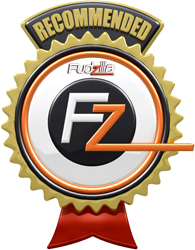When it comes to factory overclocked GTX 680 cards, Point of View/TGT’s GTX 680 4GB Beast is definitely not the card to be ignored, as it comes with a hefty overclock and water cooling. Our today’s test will put the card through its paces, both solo and in SLI.
TGT tuning team made sure that the Beast moniker isn’t there for marketing alone and the clocks prove it. The GPU Base clock stands at 1137MHz; boost clock is 1202MHz while the 4GB of GDDR5 memory runs at 1603MHz (6412MHz effectively).
Note that reference GTX 680 cards come with a 1006MHz Base clock for the GPU and Boost clock of 1058MHz. Also, the reference card comes with 2GB of GDDR5 running at 1502MHz (6008MHz effectively).
The factory overclock suggests that the GTX 680 4GB Beast should do very well against the competition, but it’s the water cooling that makes this card really special. TGT opted for AquagraFX water block made by Aqua Computer, a company that has won many awards with its products.
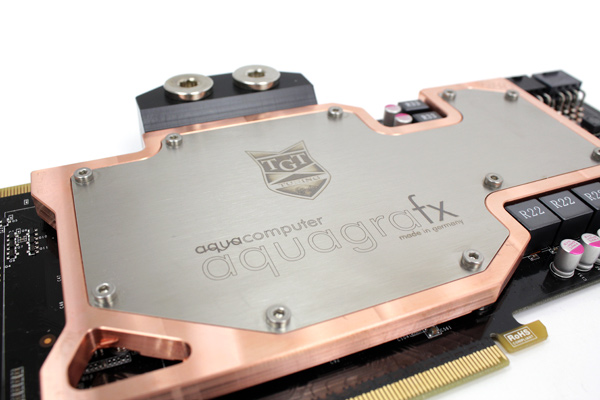
Before we move on with our testing, we should inform our readers of the changes TGT did on the card. The GTX 680 4GB Beast Watercooled launched more than a month ago, but back then it ran at lower clocks. The main difference between the new card and the earlier launched GTX 680 Beast Watercooled Edition 4GB is in the factory overclock. The new GTX 680 Beast 4GB uses Low Leakage Selection chips that TGT claims made the higher clocks possible. The new card has a Base GPU clock at 1137MHz, while the earlier one ran at Base GPU clock of 1111MHz. Users should not worry about whether they’ll buy the new card, because the company’s retail channels already carry the new card only. That the card is a new model is clear from the ‘Low Leakage’ sign highlighted on the box.
The box is tough, with a design along the lines of PoV/TGT’s earlier designs. That the GTX 680 Beast card is a newer model is clear from the ‘Low Leakage Selection’ sign highlighted on the box.
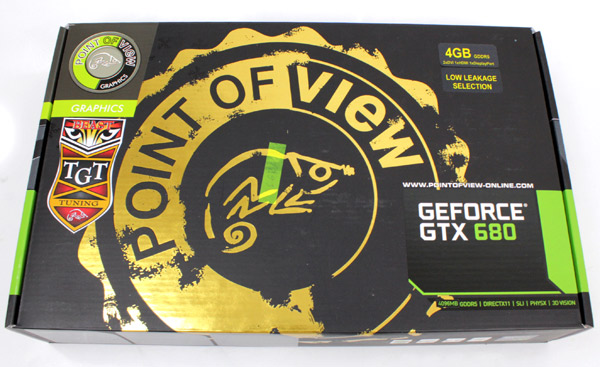
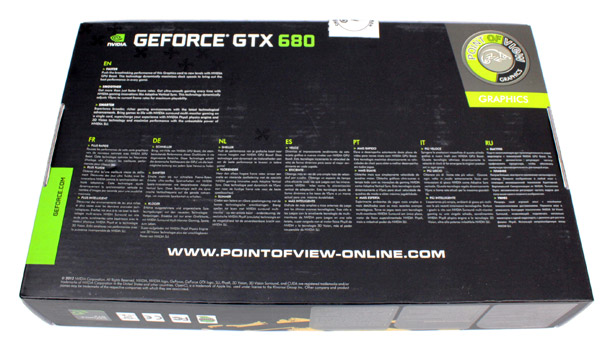
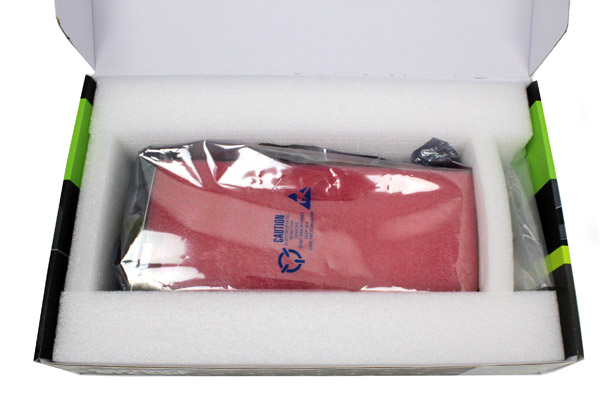
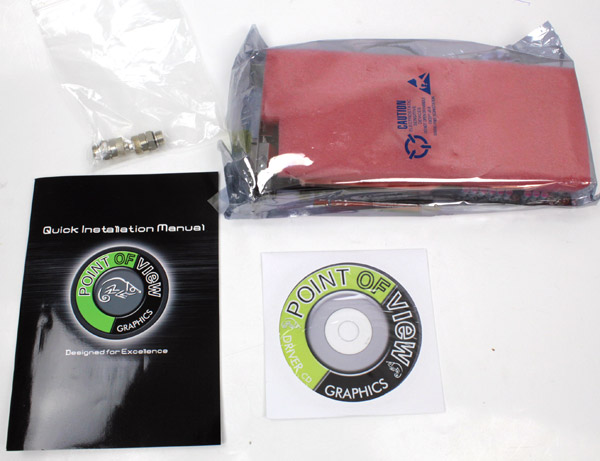
The water block used by PoV/TGT is made by Aqua Computer and can be purchased separately. The block comes with a laser etched TGT Tuning logo. The block covers the GPU, memory and low profile power components.

The card is 255mm long, just like the reference card. However, it’s taller than the reference solution due to water block connectors. The card is 134mm tall ant the highest point and weighs in at 1155g (1575g gross weight).
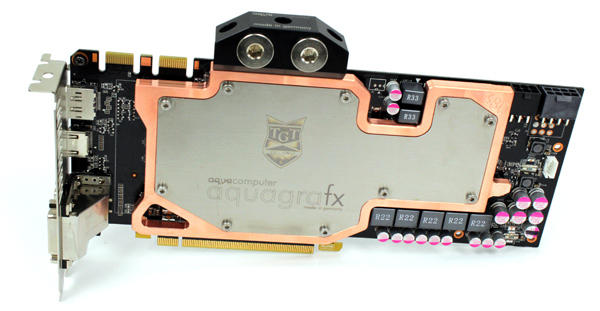
The card comes with two barbs for 10mmx8mm hosing. It is powered via one 8-pin and one 6-pin power connectors. Point of View / TGT used five phase PWM design, one phase more than on the reference card.
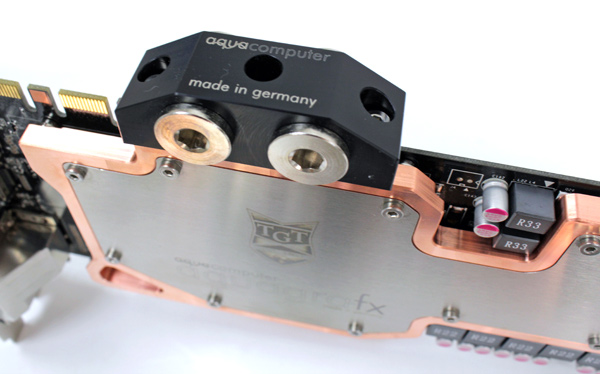
Aqua Computer’s block packs a nice punch, mostly due to the specific design of the part above the GPU. This critical area, where water picks up the heat from the GPU, was designed with maximum dissipation in mind and, as you can see, is not flat.
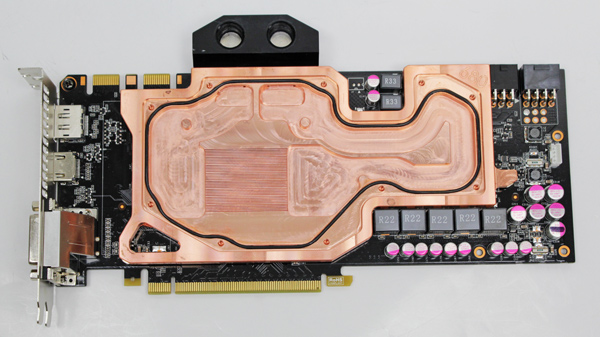
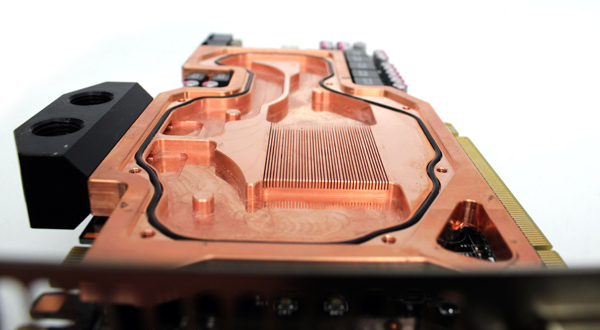
The memory on the back of the PCB is bared and the card has 16 memory modules. The memory chips come from Hynix (model No: H5GQ2H24MFR-R0C) and are rated at 1500MHz (6000MHz GDDR5 effectively).
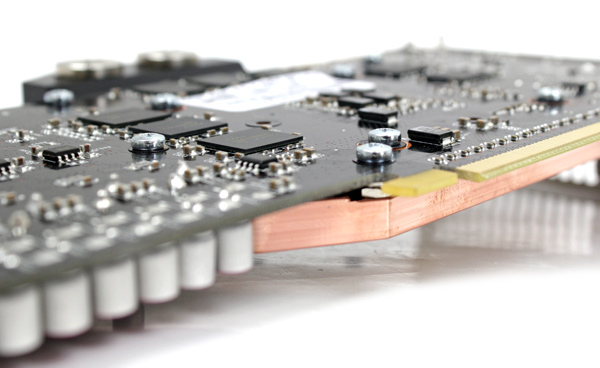
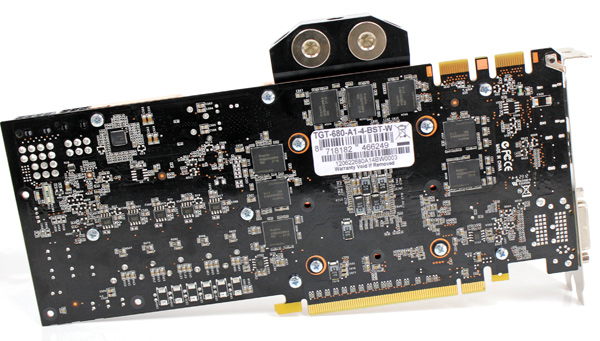
The card has two SLI connectors, which means Quad GPU is possible.
The I/O panel is identical to those we’ve seen on air-cooled PoV/TGT GTX 680 cards. There are two dual-link DVIs and standard HDMI and DisplayPort outs. Nvidia made sure not to lag behind the competition so Kepler based cards can run up to four displays simultaneously.
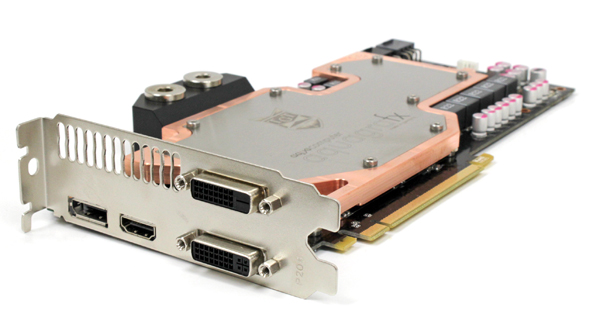
For our testing, we used Aqua Computer’s triple slot radiator with three 12cm Airstream fans combined with Eheim HPPS 12V water pump. We’re talking about fans that run at constant 1200RPM, but are inaudible. In fact, our results showed that they’re a great match with large radiators.
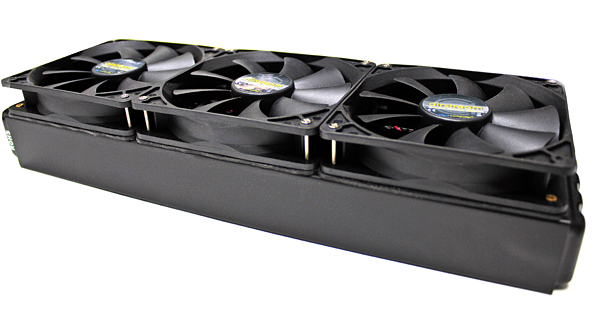

Motherboard: EVGA X79 FTW
CPU: Sandy Bridge-E Core i7 3820 (3.6GHz)
CPU Cooler: Thermalright HR-02 (Thermalright-Europa Distri www.PC-Cooling.de).
Memory: 8GB ADATA DDR3 1600 XPG Gaming series
Harddisk: OCZ Vertex 2 100 GB
Power Supply: CoolerMaster Silent Pro 1000W
Case: CoolerMaster Cosmos II Ultra Tower
Operating System: Win7 64-bit
Nvidia 305.37-desktop-win7-winvista-64bit-english-beta
AMD 12-6_vista_win7_64_dd_ccc.exe
(EVGA GTX 690 4GB & Gainward GTX 670 Phantom SLI : 301.34-desktop-win7-winvista-64bit-english-whql)
Crysis 2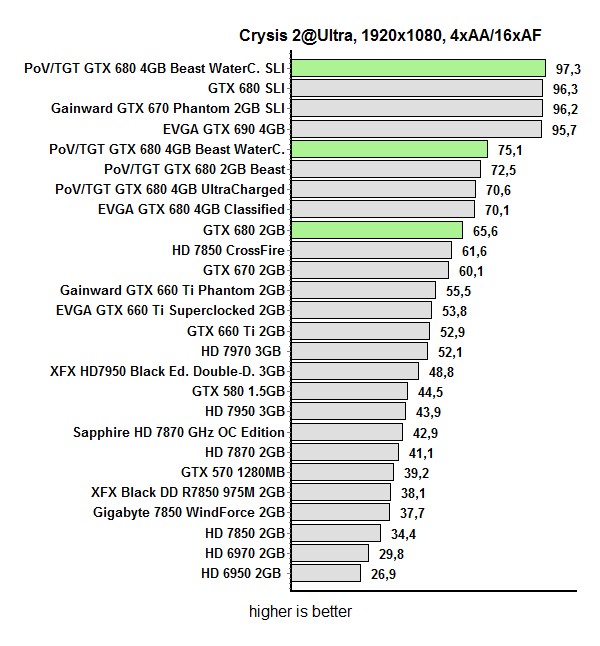
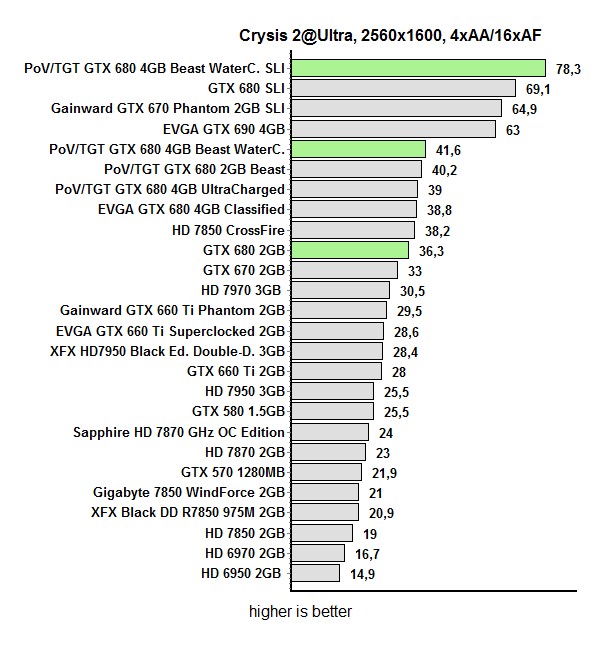
Metro 2033
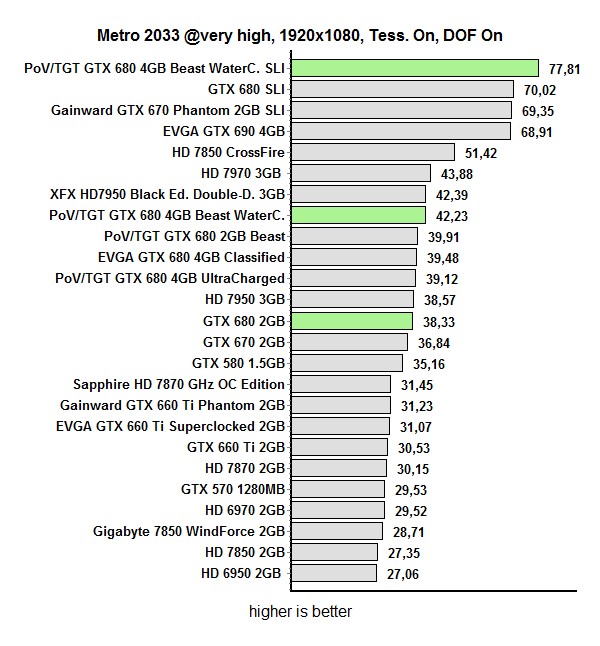
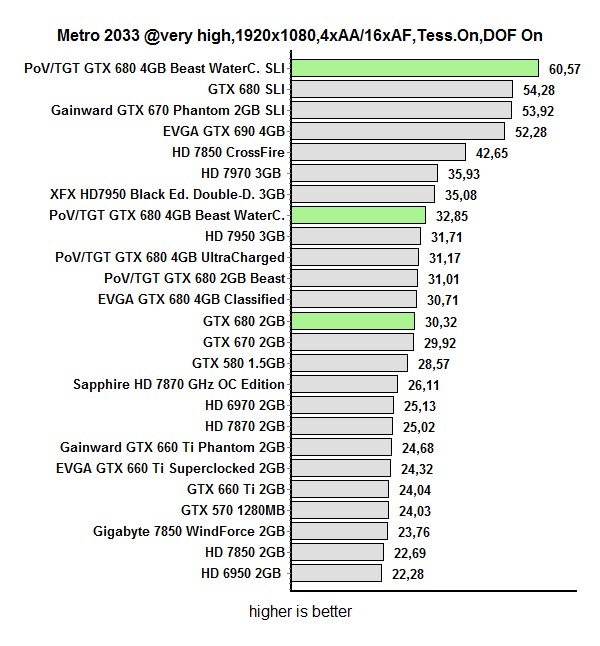
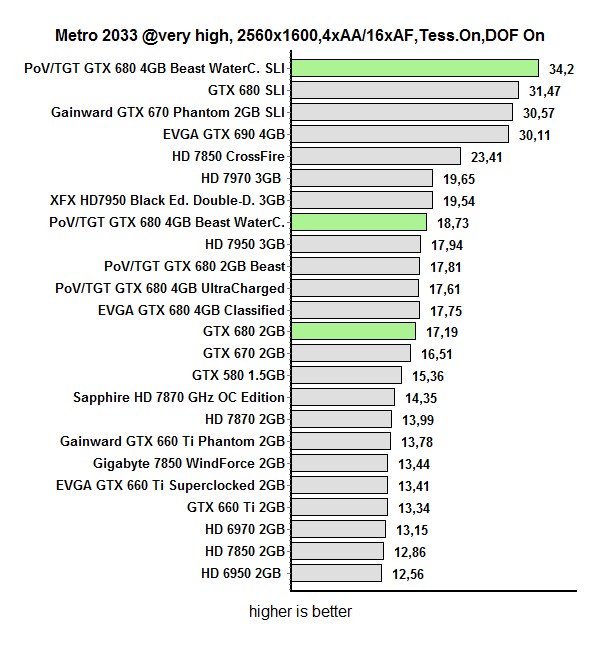
Aliens vs Predator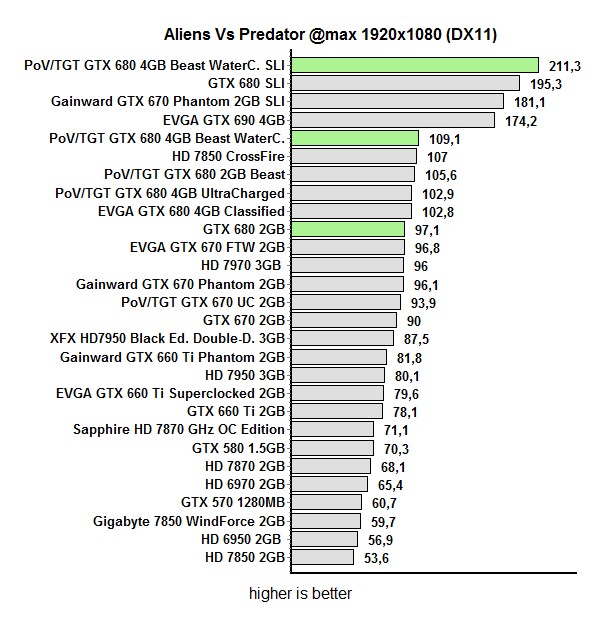
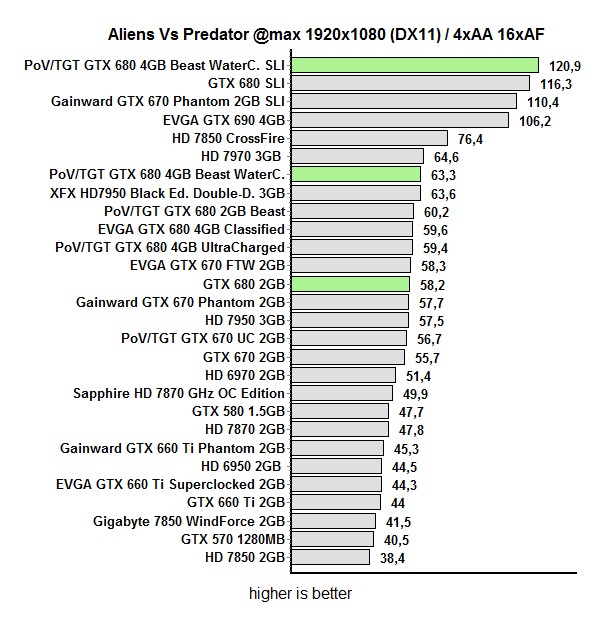
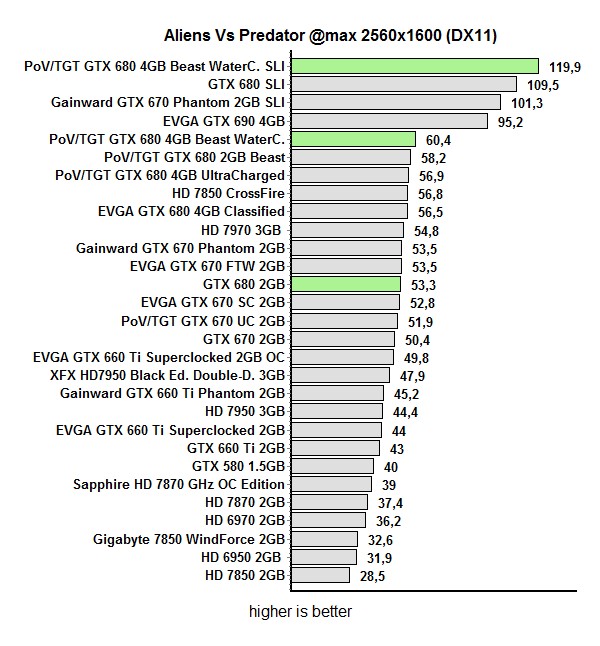
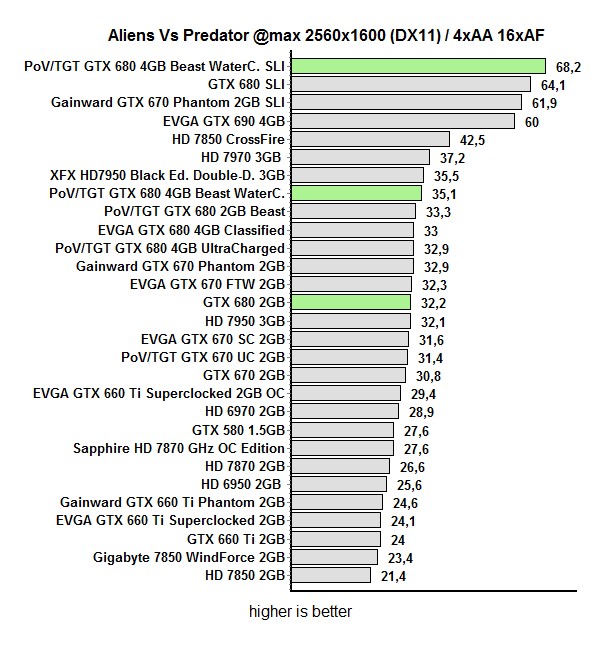
Unigine Heaven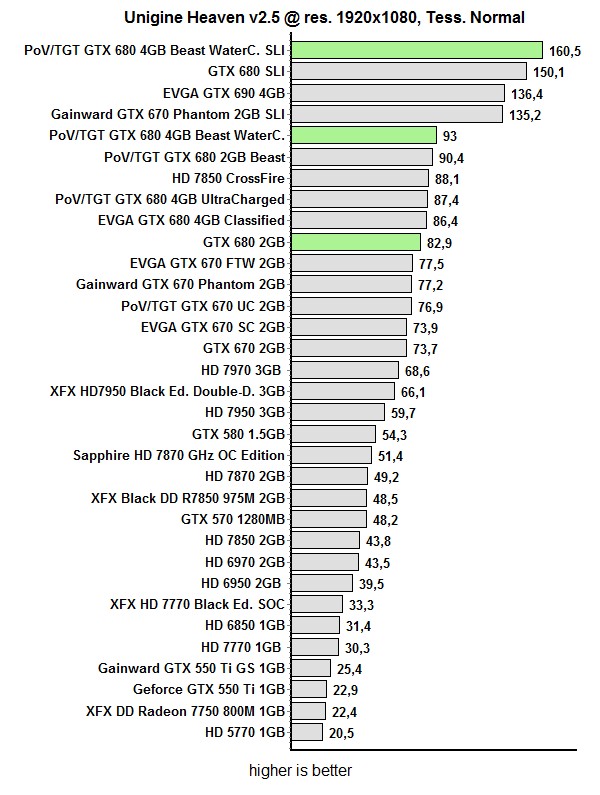
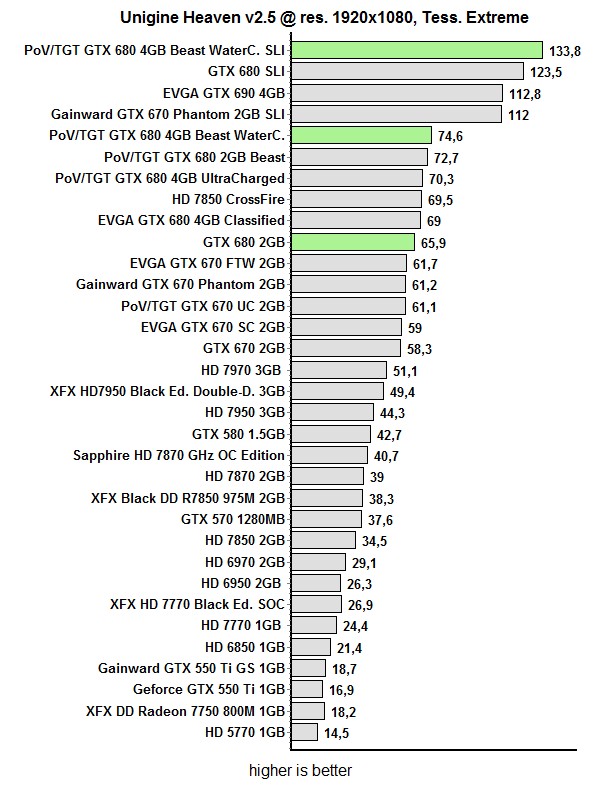
We had two GTX 680 4GB Beast cards on our test. We overclocked each of the cards individually and then in SLI.
Firstly, we noticed that although the cards are the same, they don’t have the same Boost potential. This clearly shows that two identical GK104 don’t have to overclock the same, despite working in the same environment. One GPU ended up auto-overclocked some 45MHz higher than the other. The difference is so drastic that we occasionally recorded as much as 2 percent performance difference.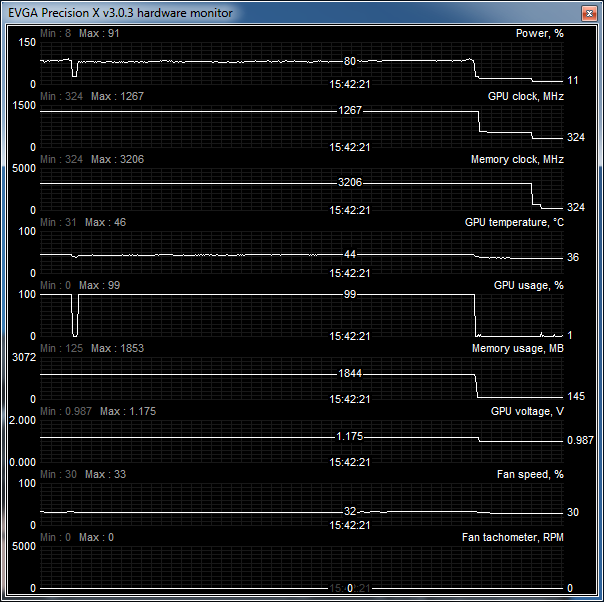
GPU 1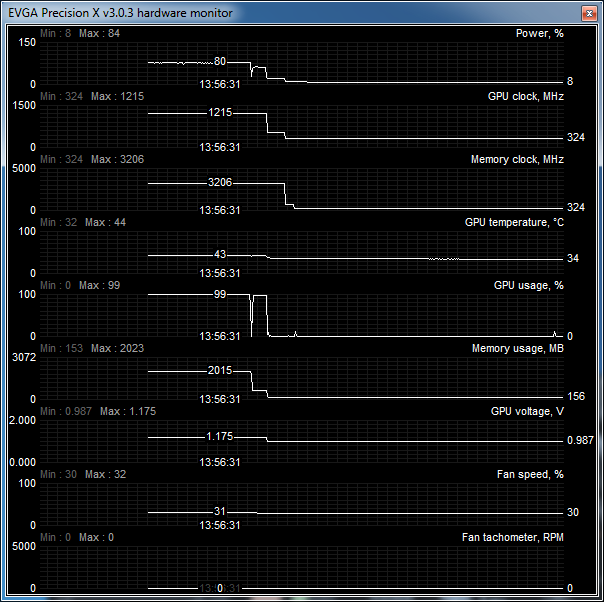
GPU 2
Overclocking was good but we must say we expected more from watercooled GTX 680 cards. We think that GPU voltage turned out to be the limiting factor, since we couldn’t increase it beyond 1.1750V. Both cards’ GPUs ran stable at beyond 1320MHz (Base clock 1217MHz). The memory handled a 400MHz overclock but the GPU refused to budge further without voltage changes, despite the low temperatures. Memory overclock didn't lag behind either and we managed to squeeze out another 200MHz (800MHz efectively) from it.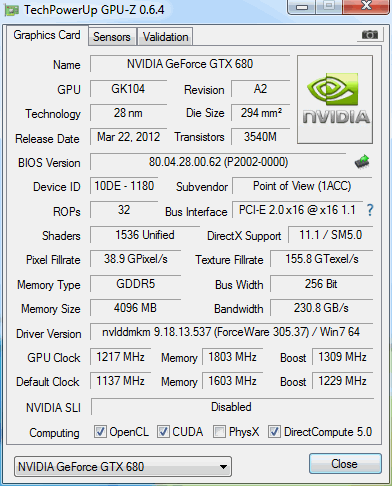
Temperatures idle
We decided to make use of the summer heat in Austria for our testing. This morning, the temperature was at 29°C but the forecast said it will go up to 35°C during the day. Well, not particularly comfortable, but it’s definitely a great chance to sweat our GTX 680 Beast Watercooled SLI system.
In idle mode and at 29°C room temperature, the GPUs ran at 29°C as well. It’s clear that watercooling temperatures can’t be lower than the room ones, but the good thing is that they’re not above either.
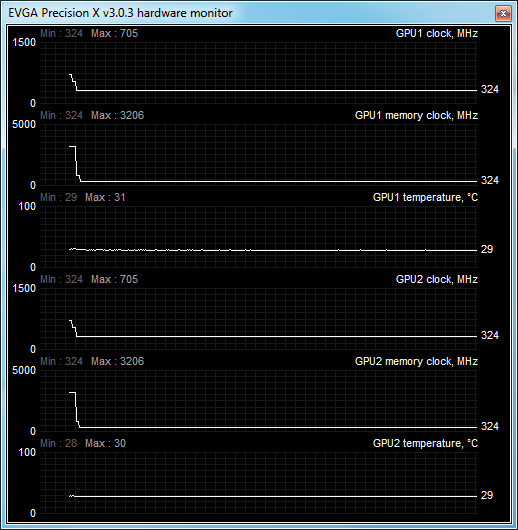
Temperatures load
After 45 minutes of playing Crysis 2 at 2560x1600 with all the effects on and with room temperature at 31°C, GPU temperatures climbed up to about 50°C. This is a great result for a card with such a high overclock, even before considering the difficult testing conditions. So, when it comes to reliability, this SLI setup definitely has what it takes. 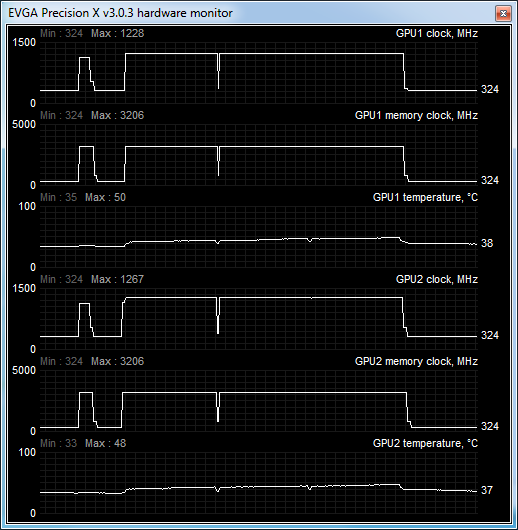
SLI load temperature
Testing a single GTX 680 4GB Watercooled graphics card resulted in about 44°C.
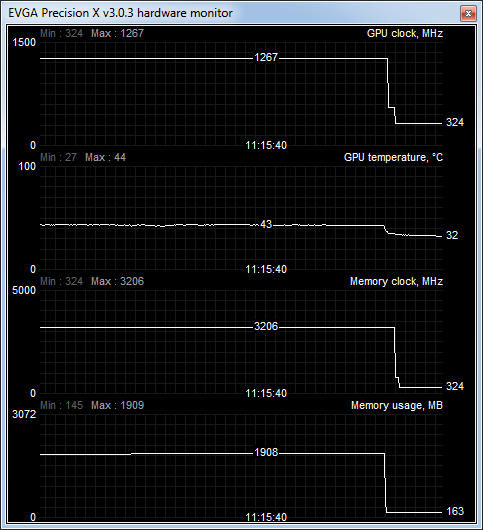
Single card load temperaure
Power Consumption
The Point of View / TGT GTX 680 4GB Beast Watercooled most certainly ranks among the best cards on the market. AquagraFX water cooling provides excellent thermals and more than compensates for the high factory overclock. The card’s GPU is 131MHz faster than the reference card while the 4GB of GDDR5 were overclocked by 101MHz (404MHz effectively). Of course, this performance doesn't come cheap and Point of View/TGT priced the card at €774. This is almost €300 higher than the most affordable GTX 680 with 2GB.
If the price alone was the deciding factor, the card probably wouldn’t fare particularly well overall. However, we're talking about a product that aimed high, rather than target price/performance sweetspots. Ultimatey, the card is a special model, and a quite charming one, and as such shouldn't have trouble reaching its target group, however small it may be.
Our testing also included SLI performance and it was a sweet experience. Most users will find a single Beast to be more affordable yet powerful enough option, and TGT made sure that the experience mirrors the title of a top card in its class. The company used Low Leakage chips, by meticulous selection of best of the best GPUs for their cards.
Although the Beast comes factory overclocked by 133MHz, we managed to overclock it by another 70MHz. The GPU refused to go further without overvolting, despite excellent thermals.
The GTX 680 4GB Beast Watercooled is faster than any GTX 680 we’ve had here, hands down. The card scored up to 14 percent higher than the reference GTX 680. The Beast’s SLI scaling is dangerously approaching full throttle and those who can afford it are in for some serious, polygon munching fun, especially since the setup beats reference SLI by up to 14 percent. By now it’s clear that the Beast is not for the faint of heart, or wallet for that matter, but PoV/TGT isn’t exactly your average budget brand either. It all boils down to a single question - you want muscle and thermals without compromise? Then get a load of the GTX 680 4B Beast Watercooled.